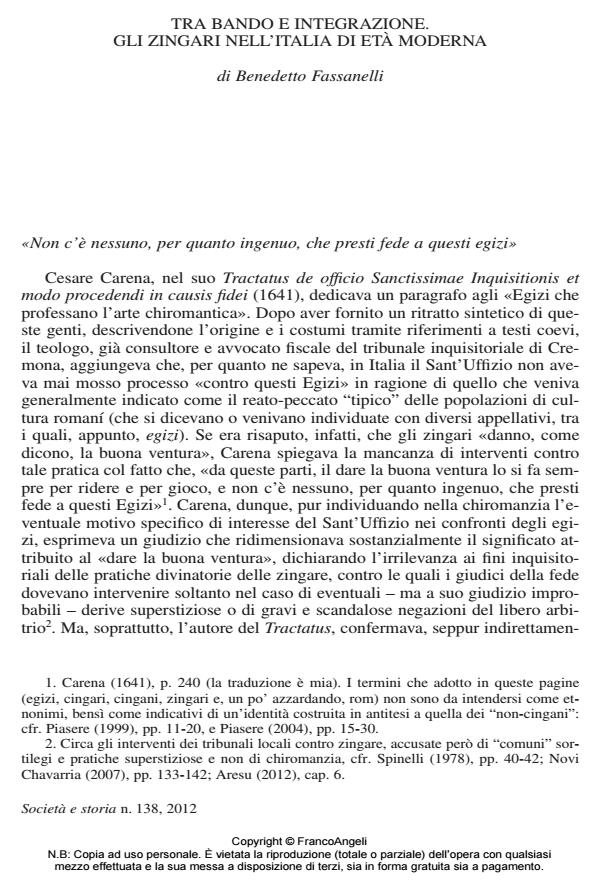Between ban and integration. Gypsies in early modern Italy
Journal title SOCIETÀ E STORIA
Author/s Benedetto Fassanelli
Publishing Year 2012 Issue 2012/138
Language Italian Pages 18 P. 751-768 File size 496 KB
DOI 10.3280/SS2012-138004
DOI is like a bar code for intellectual property: to have more infomation
click here
Below, you can see the article first page
If you want to buy this article in PDF format, you can do it, following the instructions to buy download credits

FrancoAngeli is member of Publishers International Linking Association, Inc (PILA), a not-for-profit association which run the CrossRef service enabling links to and from online scholarly content.
By focusing on the history of Gypsy groups in the early modern period, this paper aims to reflect on the opportunity to use the notion of "hostility" as an interpretative category about the relationship between majority societies and minorities. It analyzes the form of the bans that hit Gipsy people and considers as case studies the sixteenth-century Venetian legislation and the project of "reducing" Gipsy people in the Papal State in 1631. The persistence of the minority (despite the resolute tones of the repressive speech and criminal rhetoric) can be studied throgh the notion of hostility, which also reflects a relational dimension, the level of integration that the early modern Italian society was able to reach. This relationship was based on an unstable balance, an hostile one, which cannot be understood thorugh the most rigid pair "toleration/intolerance".
Keywords: Gypsies, Republic of Venice, Papal State, early modern period, reduction.
Benedetto Fassanelli, Tra bando e integrazione. Gli zingari nell’Italia di età moderna in "SOCIETÀ E STORIA " 138/2012, pp 751-768, DOI: 10.3280/SS2012-138004